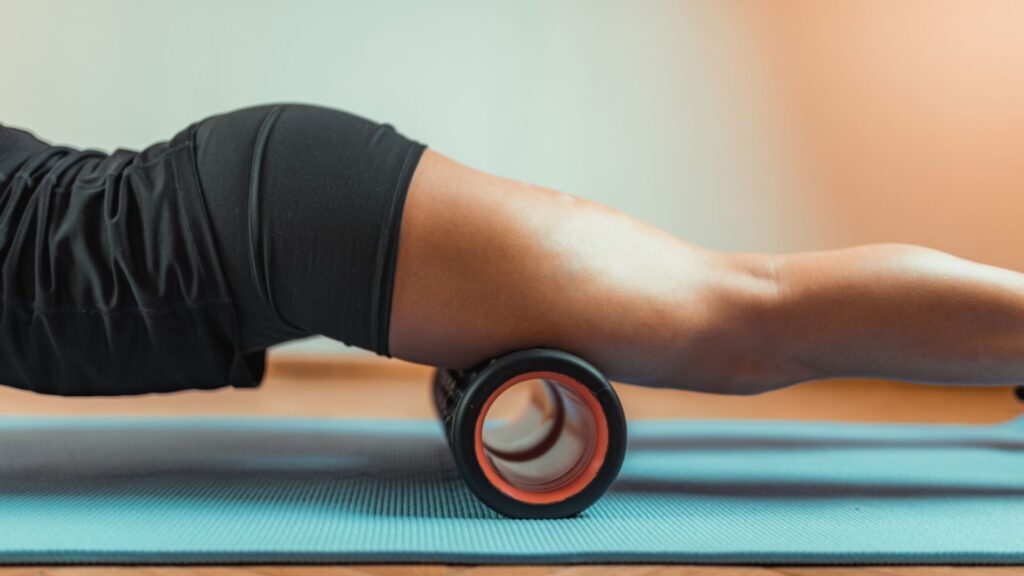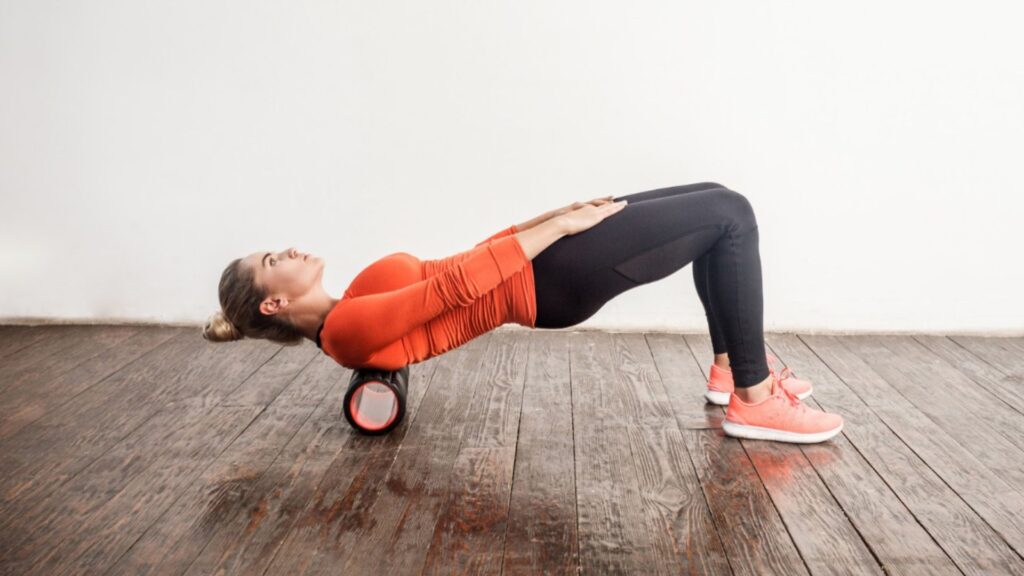For many fitness enthusiasts, the foam roller has become an essential tool in their workout routine. But what exactly are the benefits of this seemingly simple piece of equipment? Foam rolling is a form of self-myofascial release (SMR) that utilizes a cylindrical tool to apply pressure to various muscle groups. By targeting tight spots and knots (called adhesions), foam rolling can offer a range of advantages, from improving flexibility to enhancing recovery.

Although simple, foam rolling can be tricky to use for those who’ve never tried it before. If your muscles are stiff, a little bit of discomfort is to be expected. But as you progress, you will slowly notice the relief it brings to tight muscles.
Let’s explore the benefits of foam rolling:
- Reduced Muscle Soreness and Pain: Exercise can leave muscles feeling tender and achy. Foam rolling helps break down adhesions and improve blood flow, leading to a reduction in post-workout soreness and overall muscle pain.
- Enhanced Flexibility and Range of Motion: Tight muscles can restrict your ability to move freely. Foam rolling helps lengthen and loosen muscles, allowing for a greater range of motion in your joints. This can improve your performance in various activities, from yoga poses to running strides.
- Boosted Blood Flow and Circulation: Applying pressure with the foam roller can increase blood flow to targeted areas. This delivers essential nutrients to your muscles and helps remove waste products, both of which are crucial for optimal muscle function and recovery.
- Improved Performance and Injury Prevention: By addressing muscle tightness and improving flexibility, foam rolling can help you move more efficiently during exercise. Additionally, looser muscles are less prone to strains and tears, potentially reducing your risk of injuries.
- Stress Reduction and Relaxation: Foam rolling can be a surprisingly relaxing experience. The act of applying pressure and releasing tension in your muscles can help to ease stress and promote feelings of calmness.

Getting Started with the Roll:
Foam rolling is a powerful tool, but it’s important to use it properly. It is advisable that you consult your doctor or therapist if you have any known conditions. Here are some tips for beginners:
- Start Slow and Gentle: Apply light pressure and focus on rolling for short durations. Gradually increase the intensity and duration as your muscles become accustomed to the technique.
- Listen to Your Body: Foam rolling should never be painful. If you experience any sharp pain, stop rolling and consult a healthcare professional.
- Target Specific Areas: Focus on areas that tend to get tight, such as your quads, hamstrings, and calves. There are also specific techniques for targeting other muscle groups like your back and shoulders.
- Hydration is Key: Drinking plenty of water helps to loosen muscles and makes foam rolling more effective.

Foam rolling is a simple and affordable way to enhance your workout routine and overall well-being. By incorporating it into your pre and post-workout regimen, you can experience reduced pain, improved flexibility, and a faster recovery process.
Although foam rolling is a technique that can be done on your own, it is still recommended to consult with physiotherapists to accurately address areas of concern. The experts at Polarity Physiotherapy Center can help you get started!
For expert care, visit www.polarity.com.ph


